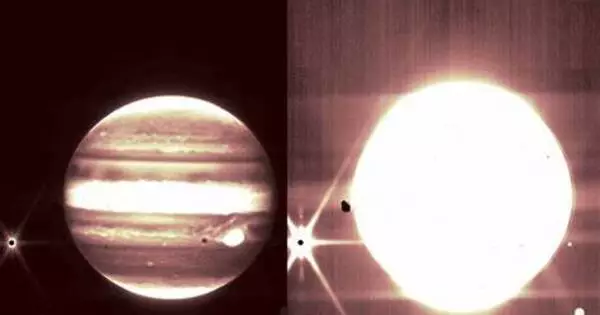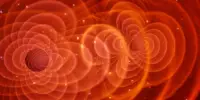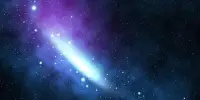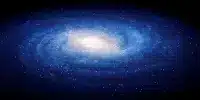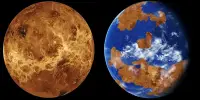JWST made spectral studies of Ganymede and infrared observations of Io last year. Hydrogen peroxide absorption lines at Ganymede’s poles indicate radiolysis of water ice by charged particles funneled by the moon’s magnetic field. Io experienced two large eruptions, one of which was coupled with a prohibited sulfur monoxide emission line. The latter lends credence to the hypothesis that SO is created at volcanic vents in a thin environment, allowing prohibited emission before collisions destroy the excited state.
The James Webb Space Telescope (JWST) is unveiling new insights about Jupiter’s Galilean satellites, particularly Ganymede, the biggest moon, and Io, the most volcanically active, with its sensitive infrared cameras and high-resolution spectrometer.
Astronomers from JWST’s Early Release Science program announce the first observation of hydrogen peroxide on Ganymede and sulfurous fumes on Io, both as a result of Jupiter’s dominant influence, in two different articles.
“This shows that we can do incredible science with the James Webb Space Telescope on solar system objects, even if the object is really bright, like Jupiter, but also when you look at very faint things next to Jupiter,” said Imke de Pater, emerita professor of astronomy and earth and planetary science at the University of California, Berkeley. The Paris Observatory’s De Pater and Thierry Fouchet are co-principal investigators for the Early Release Science solar system observation team, one of 13 teams awarded early access to the telescope.
JWST revealing the presence of hydrogen peroxide at Ganymede’s poles shows for the first time that charged particles funneled along Ganymede’s magnetic field are preferentially altering the surface chemistry of its polar caps.
Samantha Trumbo
The Ganymede study was headed by Samantha Trumbo, a 51 Pegasi b postdoctoral scholar at Cornell University, and was published in the journal Science Advances. The scientists observed light absorption by hydrogen peroxide – H2O2 – around the north and south poles of the moon using measurements obtained by the near infrared spectrometer (NIRSpec) on JWST, as a result of charged particles from Jupiter and Ganymede impacting the ice that blankets the moon.
“JWST revealing the presence of hydrogen peroxide at Ganymede’s poles shows for the first time that charged particles funneled along Ganymede’s magnetic field are preferentially altering the surface chemistry of its polar caps,” Trumbo said in a press release.
According to the researchers, peroxide is formed by charged particles striking frozen water ice near the poles and splitting the water molecules into fragments, which subsequently rejoin to form H2O2. They expected that radiolysis would take place predominantly around Ganymede’s poles because, unlike all other moons in our solar system, it possesses a magnetic field that guides charged particles toward the poles.
“Just like how Earth’s magnetic field directs charged particles from the sun to the highest latitudes, causing the aurora, Ganymede’s magnetic field does the same thing to charged particles from Jupiter’s magnetosphere,” she said. “Not only do these particles result in aurorae at Ganymede, as well, but they also impact the icy surface.”
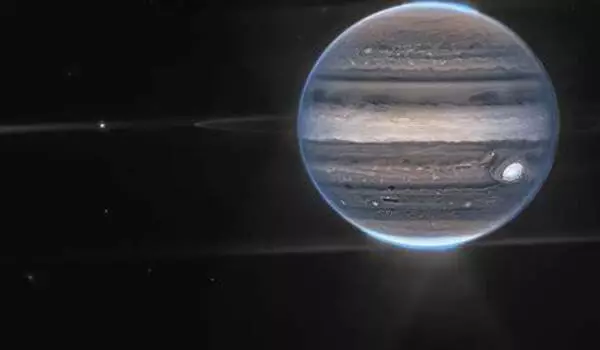
Trumbo and Michael Brown, a planetary astronomy professor at Caltech where Trumbo recently got her Ph.D., had previously examined hydrogen peroxide on Europa, another of Jupiter’s four Galilean satellites. However, peroxide was observable over much of Europa’s surface, possibly because to the lack of a magnetic field to protect the surface from the fast-moving particles whizzing around Jupiter.
“This is likely a really important and widespread process,” Trumbo was quoted as saying. “These observations of Ganymede provide a key window to understand how such water radiolysis might drive chemistry on icy bodies throughout the outer solar system, including on neighboring Europa and Callisto (the fourth Galilean moon).”
“It helps to actually understand how this so-called radiolysis works and that, indeed, it works as people expected, based on lab experiments on Earth,” de Pater said.
Io’s sulfurous environment
In a second paper, accepted for publication in the journal JGR: Planets, a publication of the American Geophysical Union, de Pater and her colleagues report new Webb observations of Io that show several ongoing eruptions, including a brightening at a volcanic complex called Loki Patera and an exceptionally bright eruption at Kanehekili Fluctus. Because Io is the only volcanically active moon in the solar system — Jupiter’s gravitational push and pull heats it up — studies like this give planetary scientists a different perspective than can be obtained by studying volcanos on Earth.
For the first time, the researchers were able to link a volcanic eruption – at Kanehekili Fluctus – to a specific emission line, a so-called “forbidden” line, of the gas sulfur monoxide (SO).
Sulfur dioxide (SO2) is the major component of Io’s atmosphere, produced by the sublimation of SO2 ice as well as continuing volcanic eruptions, similar to how volcanoes produce SO2 on Earth. Volcanoes also emit SO, which is far more difficult to detect than SO2. Because SO is present in such low quantities and is created for such a brief period of time after being excited, the prohibited SO emission line is particularly weak. Furthermore, the observations can only be done while Io is in Jupiter’s shadow, when the blazing SO gasses are easier to view. When Io is under Jupiter’s shadow, the SO2 gas in its atmosphere freezes off and falls to the planet’s surface, leaving only SO and newly emitted volcanic SO2 gas in the atmosphere.
“These observations with Webb show for the first time that the SO actually did come from a volcano,” de Pater said.
De Pater had made previous observations of Io with the Keck Telescope in Hawaii and found low levels of the forbidden SO emission over much of the moon, but she was unable to tie SO hotspots specifically to an active volcano. She suspects that much of this SO, as well as the SO2 seen during an eclipse, is coming from so-called stealth volcanoes, which erupt gas but not dust, which would make them visible.
De Pater and her colleagues hypothesized 20 years ago that this excited state of SO could only be formed in hot volcanic vents, and that the tenuous atmosphere allowed this state to last long enough (a few seconds) to emit the forbidden line. Normally, the excited states that cause this emission are soon suppressed by collisions with other molecules in the environment and are never visible. Only in sparsely populated areas of the atmosphere do such excited states endure long enough to emit prohibited lines. The greens and reds seen in Earth’s auroras are caused by prohibited oxygen transitions in the tenuous upper atmosphere.
“The link between SO and volcanoes ties in with a hypothesis we had in 2002 to explain how we could see SO emission at all,” she said. “The only way we could explain this emission is if the SO is excited in the volcanic vent at a temperature of 1500 Kelvin or so, and that it comes out in this excited state, loses its photon within a few seconds, and that is the emission we see. So these observations are the first that actually show that this is the most likely mechanism of why we see that SO.”
Webb will return to Io with NIRSpec in August. The next observation, as well as the previous one on November 15, 2022, were made while Io was in Jupiter’s shadow, so that light reflected from the planet did not overwhelm the light originating from Io.
De Pater also highlighted that Loki Patera’s brightening was compatible with the documented cycle of eruptions at the volcano, which brightens on average every 500 Earth days, with the brightening lasting a couple of months. This was determined because the moon was not brilliant when she examined it with Keck in August and September 2022, nor when another astronomer observed it from April to July 2022. Only the JWST captured the event.
